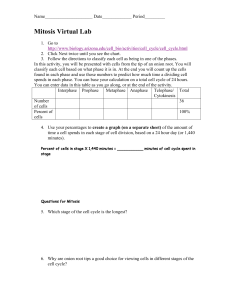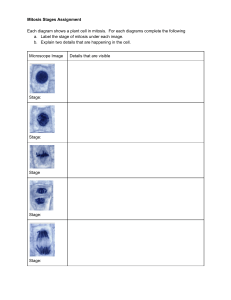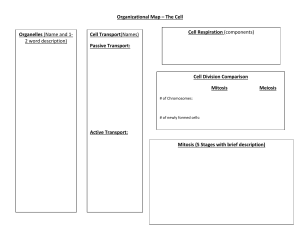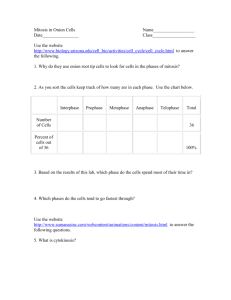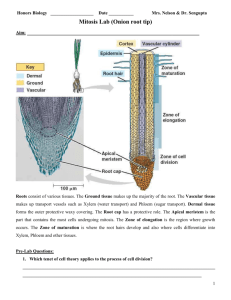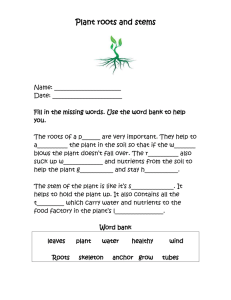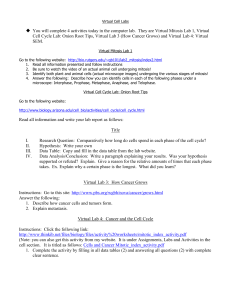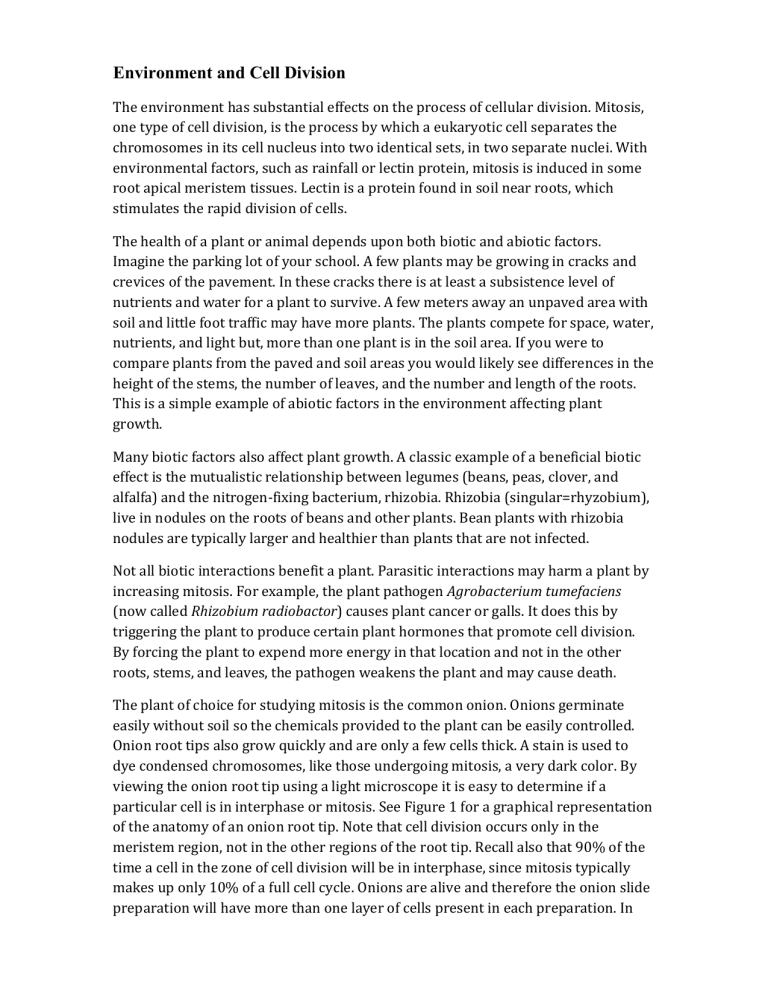
Environment and Cell Division The environment has substantial effects on the process of cellular division. Mitosis, one type of cell division, is the process by which a eukaryotic cell separates the chromosomes in its cell nucleus into two identical sets, in two separate nuclei. With environmental factors, such as rainfall or lectin protein, mitosis is induced in some root apical meristem tissues. Lectin is a protein found in soil near roots, which stimulates the rapid division of cells. The health of a plant or animal depends upon both biotic and abiotic factors. Imagine the parking lot of your school. A few plants may be growing in cracks and crevices of the pavement. In these cracks there is at least a subsistence level of nutrients and water for a plant to survive. A few meters away an unpaved area with soil and little foot traffic may have more plants. The plants compete for space, water, nutrients, and light but, more than one plant is in the soil area. If you were to compare plants from the paved and soil areas you would likely see differences in the height of the stems, the number of leaves, and the number and length of the roots. This is a simple example of abiotic factors in the environment affecting plant growth. Many biotic factors also affect plant growth. A classic example of a beneficial biotic effect is the mutualistic relationship between legumes (beans, peas, clover, and alfalfa) and the nitrogen-fixing bacterium, rhizobia. Rhizobia (singular=rhyzobium), live in nodules on the roots of beans and other plants. Bean plants with rhizobia nodules are typically larger and healthier than plants that are not infected. Not all biotic interactions benefit a plant. Parasitic interactions may harm a plant by increasing mitosis. For example, the plant pathogen Agrobacterium tumefaciens (now called Rhizobium radiobactor) causes plant cancer or galls. It does this by triggering the plant to produce certain plant hormones that promote cell division. By forcing the plant to expend more energy in that location and not in the other roots, stems, and leaves, the pathogen weakens the plant and may cause death. The plant of choice for studying mitosis is the common onion. Onions germinate easily without soil so the chemicals provided to the plant can be easily controlled. Onion root tips also grow quickly and are only a few cells thick. A stain is used to dye condensed chromosomes, like those undergoing mitosis, a very dark color. By viewing the onion root tip using a light microscope it is easy to determine if a particular cell is in interphase or mitosis. See Figure 1 for a graphical representation of the anatomy of an onion root tip. Note that cell division occurs only in the meristem region, not in the other regions of the root tip. Recall also that 90% of the time a cell in the zone of cell division will be in interphase, since mitosis typically makes up only 10% of a full cell cycle. Onions are alive and therefore the onion slide preparation will have more than one layer of cells present in each preparation. In order to reduce the total depth of the slide preparation the onion root tip needs to be treated and then squashed between the cover slip and the microscope slide. In an effort to increase production of onions as crops, scientists are studying how added natural environmental stimuli (in this case chemicals) might increase onion root growth. Onion roots are small and increased root growth may lead to increased water and nutrient absorption. Scientists also found fungal pathogens that grow in the soil can produce a lectin-like protein found in the area around the soybean roots. This protein may have been secreted by the fungus. Lectins in general induce mitosis in some root apical meristem tissues. Lectin may therefore be a promising chemical to add to the soil around onions to stimulate root growth and decrease time between plantings. jScientists reported that a fungal pathogen may affect the growth of soybeans (Glycine max). The soybean growth was decreased during three years of high rainfall. The soybean roots were poorly developed. R. anaerobis is another fungus that also is a plant pathogen that grows in the soil. R. anaerobis releases the protein lectin. A lectin-like protein was found in soil surrounding the affected soybean roots. Lectins accelerate mitosis in some root apical meristems (growth regions of plants – similar to stem cells in animals); however, in many instances, rapid cell division weakens plant tissues. We are using onions instead of soybeans since onion root tips are more easily grown and studied. In many instances, rapid cell divisions weaken plant tissues. One alternative would to be to use a different chemical to stimulate root growth. One choice would be caffeine. Caffeine has a stimulating effect on some organisms and perhaps it could have some impact on cell reproduction.
